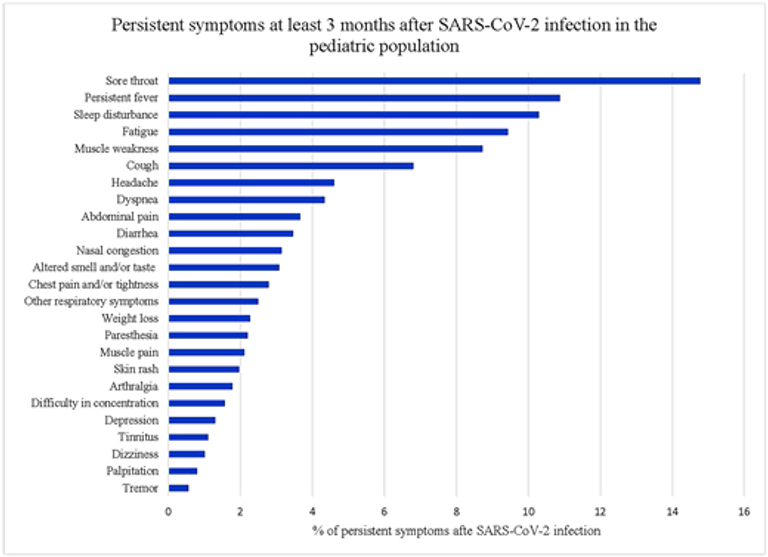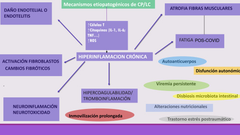CONTEXT
Long-term health effects after coronavirus disease 2019 (COVID-19) have been increasingly reported but their prevalence and significance in the pediatric population remains uncertain.
OBJECTIVE
To present the prevalence and characteristics of the long-term clinical features of COVID-19 (long COVID) in the global pediatric population.
DATA SOURCES
PubMed, Embase, Web of Science, Cochrane Library, WHO COVID-19 database, google scholar, medRxiv, bioRxiv, and multiple national public health databases.
STUDY SELECTION
Published articles and preprints from December, 2019 to December, 2022 investigating the epidemiology and characteristics of persistent clinical features at least 3 months after COVID-19 in children and adolescents (0–19 years old) were included.
DATA EXTRACTION
Study characteristics and detailed description of long COVID were extracted into a predefined form.
RESULTS
Twenty seven cohorts and 4 cross-sectional studies met the inclusion criteria and involved over 15 000 pediatric participants. A total of more than 20 persistent symptoms and clinical features were reported among children and adolescents. 16.2% (95% confidence interval 8.5% to 28.6%) of the pediatric participants experienced 1 or more persistent symptom(s) at least 3 months post COVID-19. Female gender might be associated with developing certain long COVID symptoms.
LIMITATIONS
Included studies presented with great heterogeneity because of significant variations in the definition of “long COVID,” follow up duration, and method. There could be nonresponse and other potential bias.
CONCLUSIONS
Persistent clinical features beyond 3 months among children and adolescents with proven COVID-19 are common and the symptom spectrum is wide. High-quality, prospective studies with proper controls are necessary in the future.


